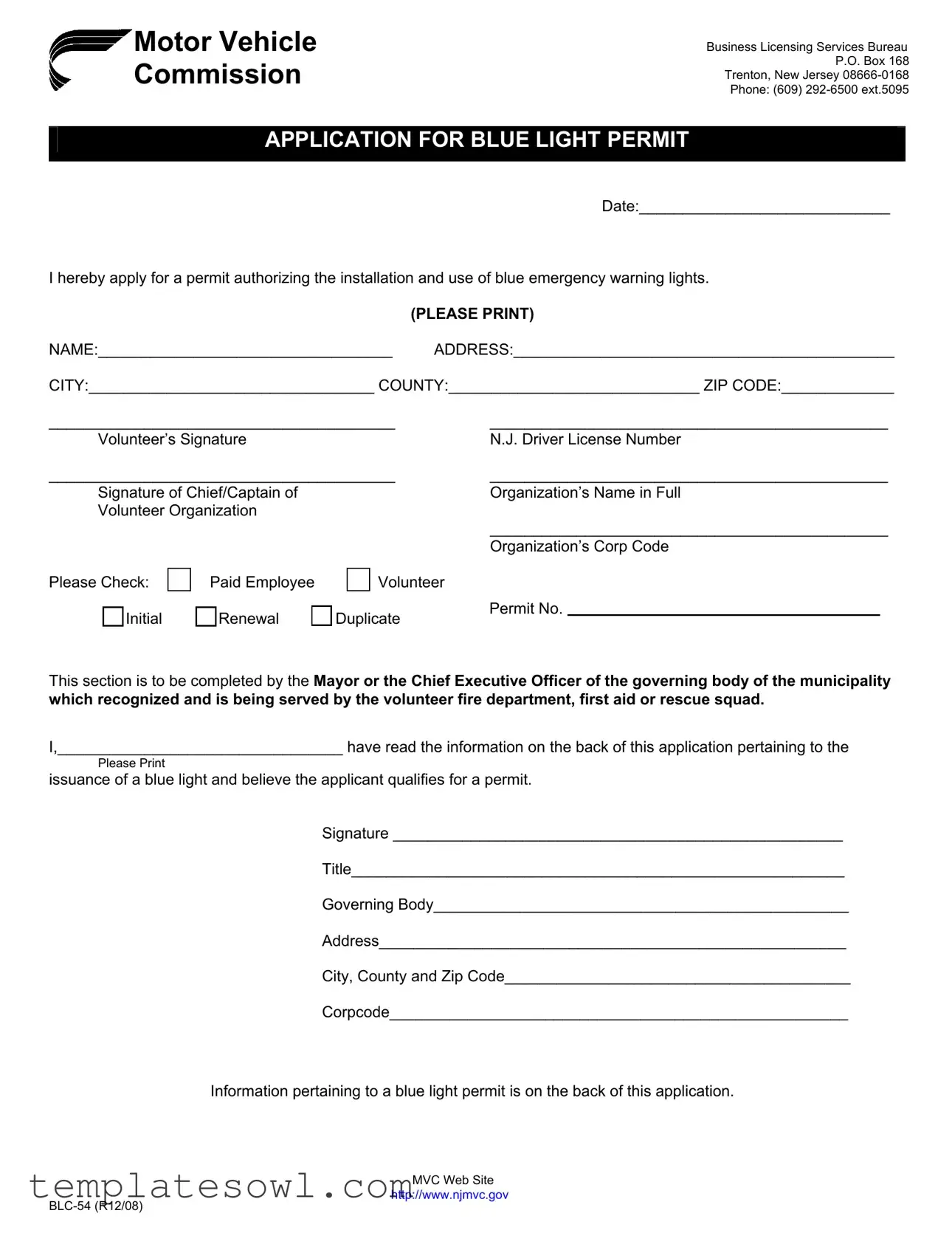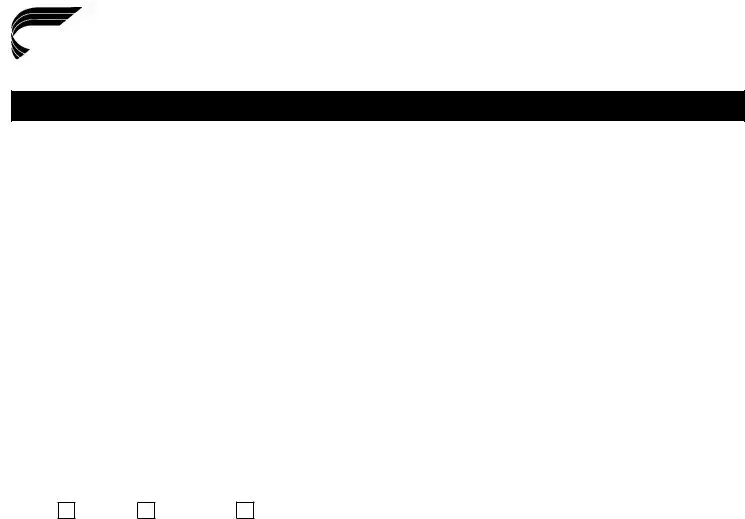Please Print
Business Licensing SERVICES Bureau
P.O. Box 168
Trenton, New Jersey 08666-0168
Phone: (609) 292-6500 ext.5095
APPLICATION FOR BLUE LIGHT PERMIT
Date:_____________________________
I hereby apply for a permit authorizing the installation and use of blue emergency warning lights.
|
|
|
|
|
|
(PLEASE PRINT) |
NAME:__________________________________ |
ADDRESS:____________________________________________ |
CITY:_________________________________ COUNTY:_____________________________ ZIP CODE:_____________ |
________________________________________ |
______________________________________________ |
Volunteer’s Signature |
|
|
|
N.J. Driver License Number |
________________________________________ |
______________________________________________ |
Signature of Chief/Captain of |
|
|
|
Organization’s Name in Full |
Volunteer Organization |
|
|
|
|
|
|
|
|
|
|
|
|
______________________________________________ |
|
|
|
|
|
|
Organization’s Corp Code |
Please Check: |
|
Paid Employee |
|
|
Volunteer |
|
|
|
Initial |
|
Renewal |
Duplicate |
Permit No. |
|
|
|
|
|
|
This section is to be completed by the Mayor or the Chief Executive Officer of the governing body of the municipality which recognized and is being served by the volunteer fire department, first aid or rescue squad.
I,_________________________________ have read the information on the back of this application pertaining to the
issuance of a blue light and believe the applicant qualifies for a permit.
Signature ____________________________________________________
Title_________________________________________________________
Governing Body________________________________________________
Address______________________________________________________
City, County and Zip Code________________________________________
Corpcode_____________________________________________________
Information pertaining to a blue light permit is on the back of this application.
MVC Web Site
http://www.njmvc.gov
BLC-54 (R12/08)
Information pertaining to BLUE Emergency Warning Light Regulations
ELIGIBLE:
Applicants for permit authorizing the use of blue emergency warning lights pursuant to N.J.A.C. 13:24-5 et seq., may be considered eligible only if the applicant is an active member in good standing of a volunteer fire company, first aid or rescue squad, or a county or municipal Office of Emergency Management volunteer whose official duties include responding to a fire or emergency call.
POSSESSION AND EXHIBITION OF PERMIT:
The permit issued must be in possession of the operator at all times when the blue light(s) are operated on the vehicle and must be exhibited upon the request of any law enforcement official.
PERMIT VALIDITY; CANCELLATION; REVOCATION
Permits are valid for four (4) years from the date of issuance and are non- transferable. When a person to whom a permit was issued ceases to be an active member in good standing of a volunteer fire company, volunteer first aid or rescue squad, or a volunteer Office of Emergency Management, the permit must be surrendered. Permits must be surrendered to the Motor Vehicle Commission within ten days of the cause for cancellation or revocation.
MOUNTING OF LIGHTS:
Emergency warning lights shall be removable or permanently attached of the flashing or revolving type, equipped with a blue lens and controlled by a switch installed inside the vehicle, or shall be blue of the light bar type.
No more than two emergency warning lights shall be installed on a vehicle. If one light is used it shall be installed in the center of the roof of the vehicle, or on the front of the vehicle so that the top of the emergency warning light is no higher than the top of the vehicles headlights, or in the center of the dashboard. It may be a low profile light bar of the strobe, halogen, or incandescent type, or a combination thereof. If two lights are used they may be placed on the windshield columns on each side of the vehicle where spotlights are normally mounted, or on either side of the roof at the front of the vehicle directly back of the top of the windshield. Under no circumstances may one light be placed on the roof and one on the windshield column in the spotlight position. Light elements shall be shielded form direct sight or view of the driver.
ALTERNATING FLASHING OR STROBE HEADLIGHTS ARE PROHIBITED AND SHALL NOT BE INCORPORATED INTO THE HOUSING OF ANY LIGHTING.
USE:
The blue emergency warning lights may be used only when the vehicle is being operated in response to an emergency. Any other use of the lights is prohibited.

